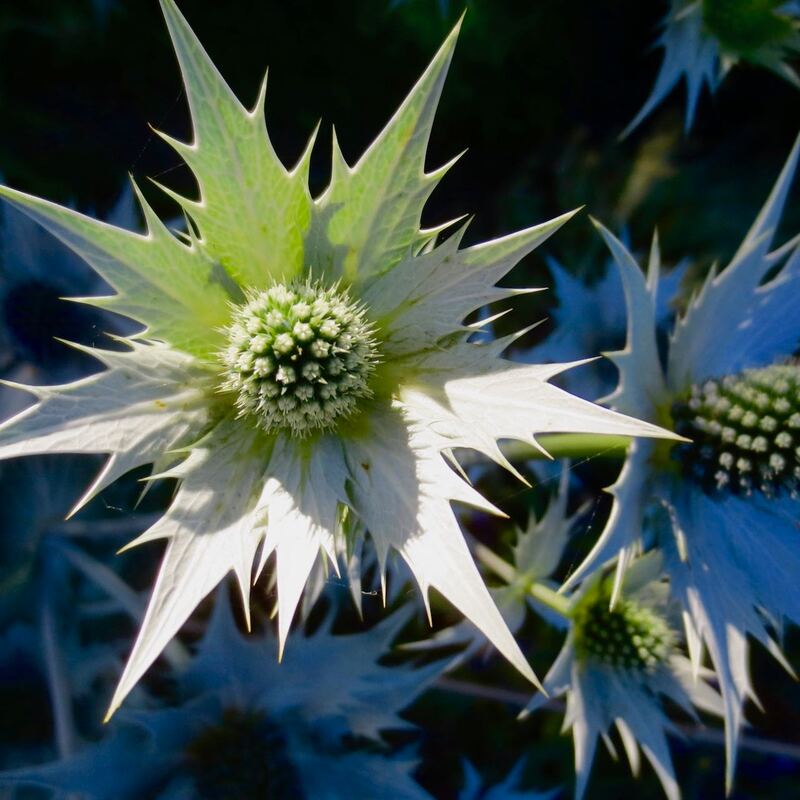|
Eryngiums - or sea hollies, as they are often known - are amongst the most elegant and architectural plants you can grow.
There are some 300 species worldwide, ranging in size from low, creeping mats to two-metre-plus giants. Whilst they’re often decidedly spiky, sea hollies are not related to holly. What’s more, most of them are not coastal plants - and you certainly don’t need to live by the sea to grow them! |
|
Sea hollies have a long season of interest - all year round in some cases - and the pollinator friendly flowers come in a range of striking colours including metallic blues, purples and silvers, whites, creams, greens, smouldering maroons, browns and even near-black.
These blooms are a florist’s and flower arranger’s dream. Eryngiums make long-lasting cut flowers, and they can also be dried and used for a wide range of decorative purposes. |
|
Eryngiums are important in folk cultures across the world, especially as foods, flavourings and medicines. Various species have been grown in European gardens since the Middle Ages.
Despite this, the sea hollies are a relatively mysterious and poorly understood group of plants. There is no comprehensive, reliable reference work on the subject for gardeners. Species are regularly confused and misidentified by nurseries and gardening writers, many of whom give highly inaccurate advice about growing them. This may explain why eryngiums aren’t yet as popular as they deserve to be! |
|
We have grown sea hollies for several years in our small North Yorkshire garden and adjoining allotment. We currently have around 30 different species, some of which are only rarely seen in the UK. We also grow a selection of cultivars.
In June 2020 our collection of eryngium species and garden hybrids was awarded National Plant Collection® status by Plant Heritage. We plan to continue to expand it to include as many as possible of the sea hollies recorded as having been grown in British gardens - although not all these records are accurate, as our research has shown. |
|
If you're new to eryngiums, we hope this site gives you some pointers about what to grow and how to go about it. Contact us if you need help!
If your interest is more academic, we would, of course, be equally delighted to hear from you. Our collection is open to visitors, by prior arrangement only and subject to constraints imposed by Covid-19. With the same proviso, we are available to give talks - or write features - on sea hollies and other gardening topics. Brian & Kathy Pike |
Want to chat about sea hollies or share your photos? Join the Sea Holly Facebook Group!





